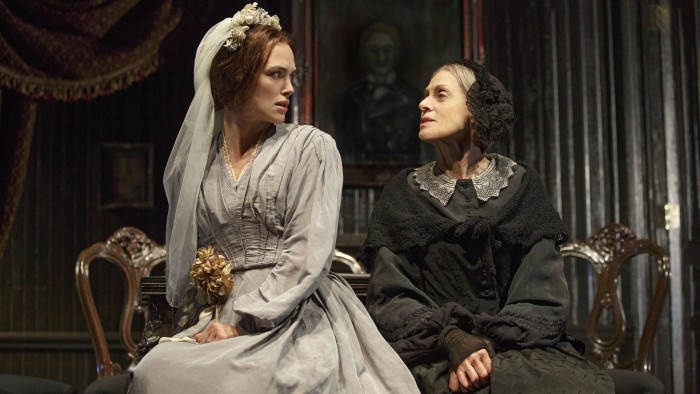Keira Knightley makes her Broadway debut in ‘Thérèse Raquin’

Roula Khalaf, Editor of the FT, selects her favourite stories in this weekly newsletter.
For the first half-hour of Thérèse Raquin, written by Helen Edmundson and based on the 1867 novel by Emile Zola, the title character barely speaks. The lack of dialogue means that her interpreter, Keira Knightley, in her Broadway debut and lit like a film star, is consigned to the corners. She walks along the river of a French provincial town, dreaming of liberation from an oppressive life with her sickly first cousin, Camille, and his mother, Madame Raquin, who is covered in a thick costume and oblivious to everyone but her dear boy. After Thérèse is married off to Camille, the household moves to Paris, where she finds liberation in the form of her husband’s handsome friend, Laurent.
When Laurent leaves the room, Thérèse rubs against a chair, like a domestic cat gone feral. And in this potboiling production from Roundabout Theatre Company, feeling up the furniture provides the sharpest jolt of erotic electricity. Thérèse and Laurent consummate their attraction, making love mostly with their clothes on. “I’m addicted to you!” he exclaims.
In spite of a cohesive band of players and a fiercely committed performance from Judith Light as Madame Raquin, this two-act evening provides less of a fix for the audience than Thérèse does for Laurent.
The production, directed by Evan Cabnet, credibly conjures the France of 1868, and all the actors, including Gabriel Ebert as Camille and Matt Ryan as Laurent, show sufficient imagination for playing period. Beowulf Boritt’s Parisian set — an apartment above a haberdashery — creaks with psychological stuffiness, and bursts into Monet-like backdrops when the characters are outdoors.
A rear-stage ribbon of water provides a poetic location for the lovers to rid themselves of Camille. They descend into mutual recrimination, a bit too quickly in this adaptation, but Madame Raquin’s reactions to the lovers provide startling moments. Paralysed by a stroke, she must rely on facial expressions to register her disgust at their hypocrisy.
Why the role of Thérèse continues to attract so many well-known actors is not a surprise. Even with its melodrama, the story furnishes a kind of female awakening that is as tempting to young women as one of Laurent’s smouldering glances. Knightley invests Thérèse with a splendid abandon but her line readings can lack variety, and overall this production casts too few sparks.

To January 3, roundabouttheatre.org
Photograph: Joan Marcus
Comments